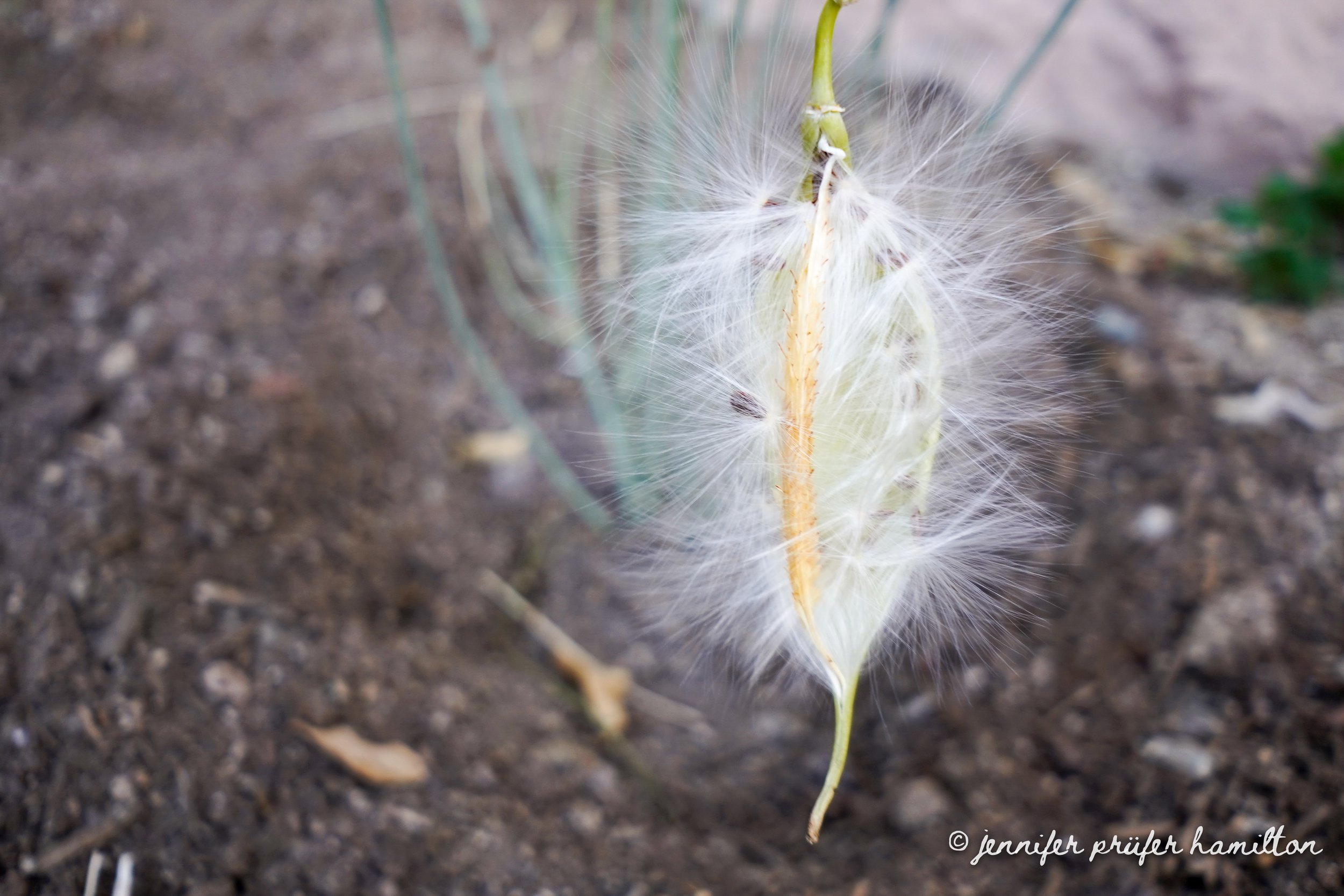Desert Milkweed
Support monarch butterflies with desert milkweed!
Watching their larvae eat the stems and transform into caterpillars and then butterflies is quite a sight to experience.
As a huge bonus, desert milkweed is one of the most low-maintenance flowering shrubs that we can grow here in the desert, since it requires minimal water and minimal care, all while taking the desert heat like a champ.
Botanical name: Asclepias subulata
Other names: Arizona milkweed, Rush milkweed
Close up look at the desert milkweed flowers
TABLE OF CONTENTS
Desert Milkweed Appearance
Desert milkweed for sale at the nursery
Desert milkweed is a perennial desert shrub.
The plant has mainly long and thin stems that are about 4-5 feet tall. They grow vertically, with some stems arching over to the side. Small leaves appear briefly on new stems, then drop to minimize evaporation.
Desert milkweed photosynthesizes mainly through its muted green stems.
When in bloom, small snowflake-shaped flowers that are white-yellow appear at the tip of the stems in clusters.
Followed by light green seed pods.
Desert Milkweed Landscaping Tips
Desert milkweed is a desert shrub that works well in informal desert-themed gardens.
Adds a unique texture with its narrow, vertical stems.
Great candidate for planting poolside because it has almost no leaf litter and no thorns.
Supports butterfly population such as monarchs and queen butterflies. Attracts other pollinators such as bees as well.
Very drought tolerant and tolerates a wide range of temperatures.
Very low maintenance. Minimal pruning needed to keep shrub tidy.
Desert Milkweed Origin
Desert milkweed originates from the desert regions of Mexico and the Southwest, USA.
Desert Milkweed Care
Soil: Loose, well-draining soil such as sandy or rocky soils.
Temperature: Can withstand temperatures down to 20 degrees for a short period of time. Does very well in the heat.
Water: Occasional, deep watering. Allow the soil to completely dry out between waterings. Either use a moisture meter or stick your finger through the soil to gauge the moisture level. It’s better to err on the side of underwatering than overwatering.
Sun: Full sun.
Desert Milkweed Problems
Pests: Desert milkweed is mostly pest-resistant. May attract aphids, especially during bloom and/or after it gets watered heavily. Blast them off with water if the infestation is light. Otherwise, use horticultural oil or soapy water. Repeated application is necessary to disrupt their life cycles.
Whenever using any kind of pesticide, be aware that it can damage the plant if the temperatures are in the 80s or above.
Signs of overwatering: Wilting stems, root rot.
Signs of too little water: Shriveling, drying skin, dropping leaves
Signs of too much sun: Burning, scarring, fading color
Signs of too little sun: Etiolation
Desert Milkweed Propagation
Once the desert milkweed has grown a seed pod, wait for it to mature and then open up. Extract seeds and plant in moist soil.
Desert milkweed seedpod and seeds
FAQ
How much does a Desert Milkweed cost?
At our nursery, desert milkweed costs $25 for a 5-gallon container and $75 for a 15-gallon container.
Prices are subject to change. Please contact us for the most up-to-date information on pricing. We may have larger sizes available. We provide installation services locally at a separate cost.
Will the desert milkweed attract butterflies?
Yes, that’s the main reason gardeners put desert milkweed in their gardens. The milkweed will attract butterflies (including monarch butterflies), and will serve as a home and feeding station for their larvae.
Is desert milkweed easy to grow?
Yes, desert milkweed is very easy to grow in dry and warm regions, such as the Coachella Valley. It requires minimal care.
Summary
| SIZE (H X W) | 4 x 4 feet |
|---|---|
| FLOWER COLOR | White |
| FLOWER SEASON | Year-round |
| EXPOSURE | Full Sun |
| WATER | Low |
| GROWTH RATE | Moderate |
| HARDINESS | 20º F, USDA Zone 8 |
| PRUNING | None |


